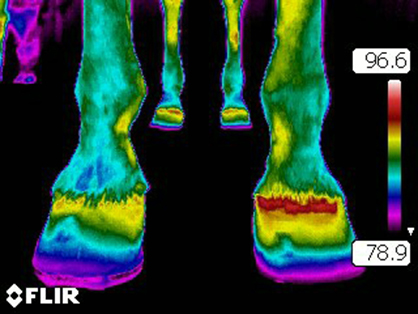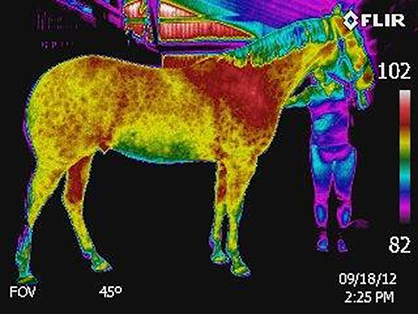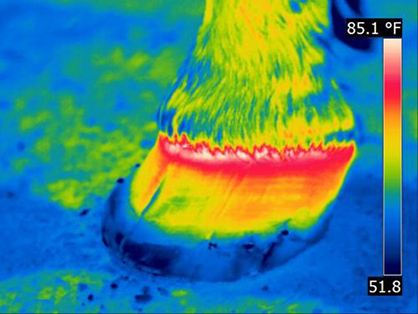The Importance of Hoof Health to Overall Performance
By: Catherine Winter
If you’ve spent any time around horses, chances are you’ve heard the term, “No hoof, no horse.” If a horse’s feet aren’t healthy, his performance may be negatively affected, even to the point where there’s no performance at all. Whether your horse is a trail riding partner, an international show horse, or a multi-million dollar racehorse, hoof health is of critical importance.
When looking at hoof health, multiple factors are important: the quality of the hoof surface and sole, the hoof angles, and how the horse tracks and wears on his feet. Hoof surface and sole is largely a metabolic issue impacted by the nature of the horse itself, food, and environment. Horses have a natural hoof angle, but that’s often altered over time by work and the intervention of farriers. Work and the farrier also affect track and wear.
So how do you know if your horse’s feet are healthy? One way is by x-ray. Many horse owners, veterinarians and farriers will take regular x-rays to see if a horse has appropriate hoof angles, to determine hoof balance and health, and to determine if any navicular changes have occurred. Farriers will use measurements from x-rays to make changes to their shoeing approach.
Another highly effective approach to monitoring hoof health is thermal imaging. X-rays are a form of anatomical imaging, meaning that these images show the underlying structures of the hoof. However, thermal imaging is a form of physiologic imaging, so these images show metabolic changes in the hoof. In layman’s terms, thermal imaging shows areas of heat and inflammation as well as areas where there is a lack of circulation that could indicate problems within the horse’s foot.
It is extremely common when performing thermal imaging scans to see inflamed heels as a result of heel concussion from the work that we ask our equine partners to perform. Improving hoof angles can alleviate this pressure. This is a critical fix, as horses that suffer from heel jamming will often change the pattern of their foot-fall, which could lead to inflammation of the laminae as well as navicular changes in the foot.
Another common issue is to see hooves that are imbalanced, where a horse is tracking more on the inside or outside of the foot, causing friction and inflammation. This imbalance can lead to soft tissue injuries.
Hoof pain can also cause compensatory injuries in the rest of the horse’s body. For example, if a horse is experiencing pain and inflammation in the foot and changes his way of going to avoid that pain, the result can be pain and inflammation in the neck, back, shoulders, and other areas.
Thermal imaging can detect hoof imbalances, infections in the foot including abscesses, navicular and laminitic changes, and circulation issues within the sole and hoof wall.
Ideally, thermal imaging is performed as a preventive maintenance tool when a horse is sound to ensure that proactive changes can be made as appropriate to maintain and improve performance. However, thermography is often used when performance has been negatively impacted or lameness is evident to determine the source of the issue.
To learn more about equine thermal imaging, contact Equine Thermographics at 919-410-2826 or visit their FaceBook page.
Catherine Winter is a lifelong horsewoman and the founder of Equine Thermographics. She competes in jumpers and eventing on her mare Coquette, known as Strudel around the barn.













